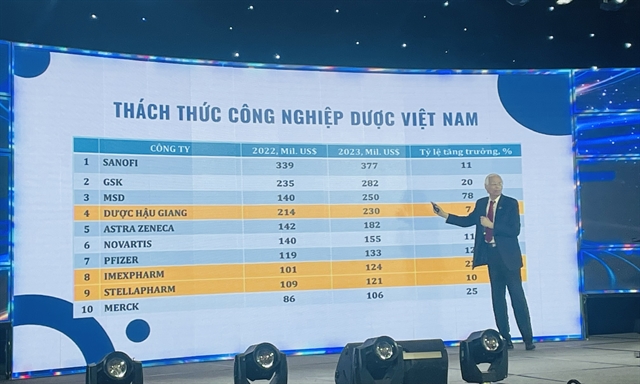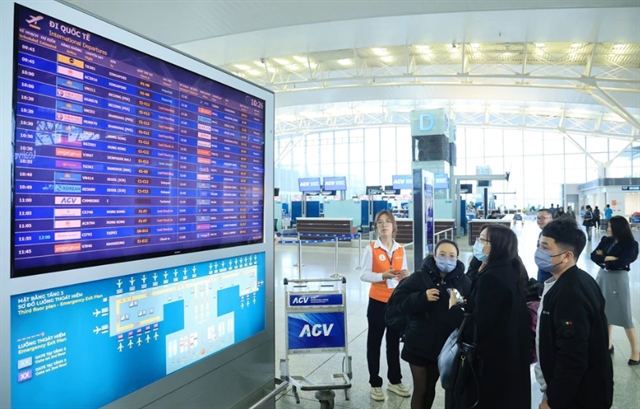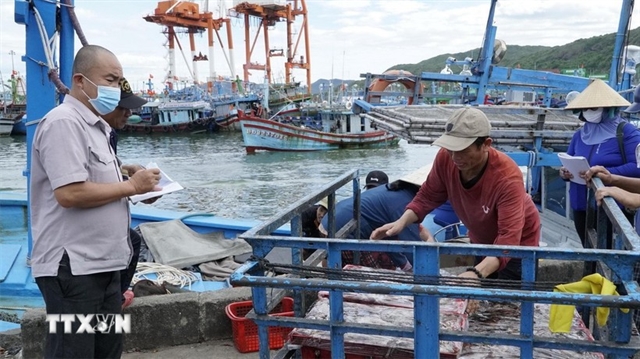 Society
Society

 |
| Two pharmaceutical technicians package medications at a manufacturing facility in Long An Province.— VNA/VNS Photo |
HÀ NỘI — The pharmaceutical industry has seen impressive growth over the past three decades, with per capita drug expenditure skyrocketing from US$0.5 to $75, according to former Minister of Health Lê Văn Truyền.
Truyền was speaking at the seminar 'Innovation-The Development Pillar for the Pharmaceutical Industry' on Wednesday.
Despite the growth, the former Minister underlined several challenges for the industry, the first being limited technical infrastructure, which has hindered the digitalisation pace of the sector.
The second is the lack of human resources capable of conducting R&D. While the industry is shifting towards biological drugs, Việt Nam's manufacturing capabilities primarily focus on chemical drugs and this gap poses a challenge for domestic companies to adapt and follow the trend.
The third lies in the decentralised nature of R&D facilities and the lack of large-scale, national-level R&D centres. Most companies have small, understaffed research departments and the mechanisms for transferring R&D results are underdeveloped.
The fourth centres around the constrained financial resources of domestic pharmaceutical companies. The low level of R&D investment makes it difficult to achieve significant breakthroughs.
Additionally, the uncertainties surrounding the return on investment, such as cost recovery and market penetration, discourages them from making substantial R&D commitments.
"There is a glimmer of hope as these issues have been identified in the Pharmaceutical Industry Development Strategy for 2030," said Truyền.
"The ongoing revisions to pharmaceutical regulations indicate a strategic approach to addressing these issues, promising improvements by 2030 and 2045."
Highlighting the progress made in addressing shortcomings and revising the Pharmaceutical Law, Tạ Mạnh Hùng, Deputy Director of the Ministry of Health's Drug Administration, noted that the industry has seen remarkable growth since 2016.
It has transitioned from being predominantly state-owned to one characterised by over 200 private companies. This transformation has effectively addressed the previous drug shortages, ensuring healthcare services be adequately supplied.
"However, through the eight years of implementing the Law, the need for amendments has become apparent," said Hùng.
"The current draft amendment to the Law encompasses five major measures."
The first measure involves boosting the supply of quality medicines to meet people's needs. The second is to guarantee the supply of medicines to meet the demands of disaster relief, national security, and disease control.
The sector also needs to raise the bar on imported and exported drugs and pharmaceutical ingredients in line with international practices.
It also needs to accelerate growth, focusing on R&D, technology transfer and the production of innovative and advanced drugs, biological drugs/ingredients and standardised herbal medicines.
Finally the industry needs to restructure and reorganise the pharmaceutical raw material distribution system to align with international norms.
"We seek to improve drug availability but only for products that meet the highest standards. We want to avoid a rush to expand the industry without adequate safeguards," said Hùng.

.jpg)


